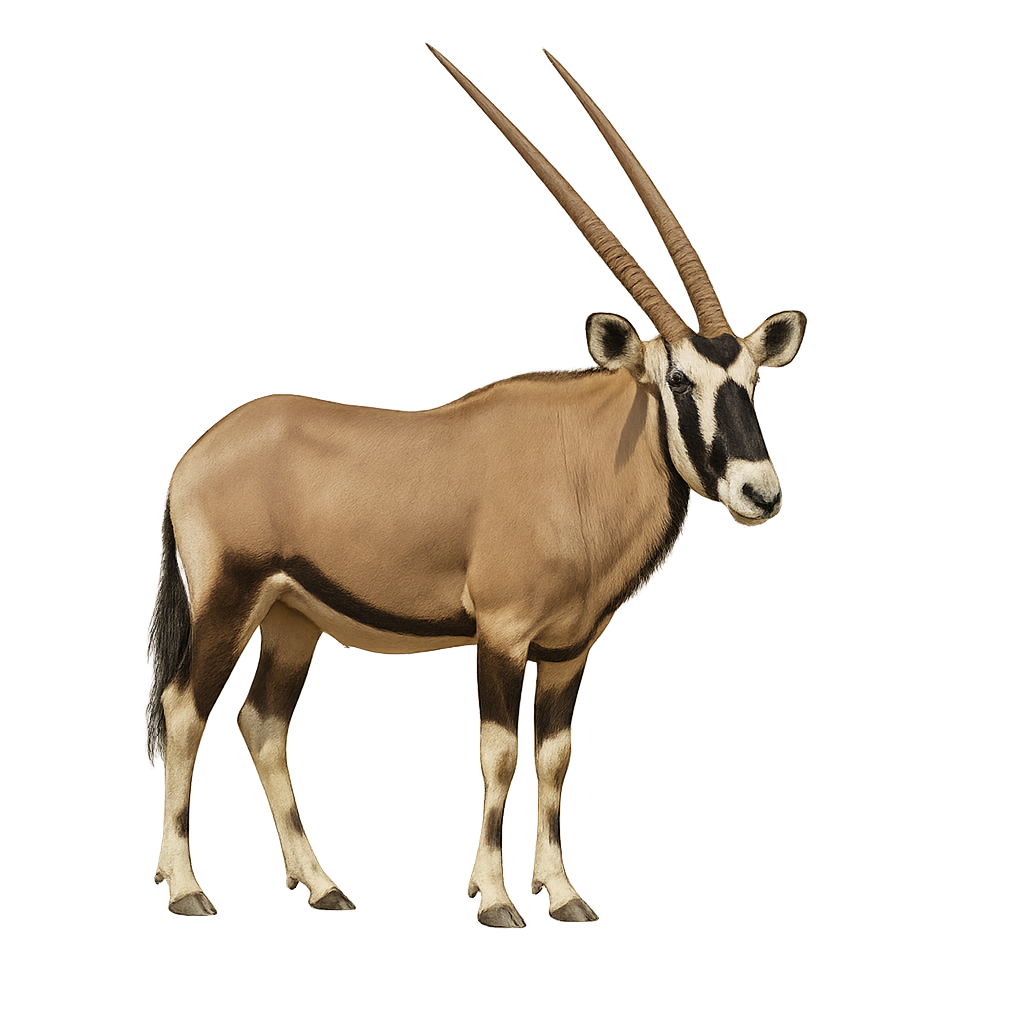Your wildlife photography guide.
Explore the gemsbok in detail, study its behavior, prepare your shots.
Where to observe and photograph the gemsbok in the wild
Learn where and when to spot the gemsbok in the wild, how to identify the species based on distinctive features, and what natural environments it inhabits. The WildlifePhotographer app offers tailored photography tips that reflect the gemsbok’s behavior, helping you capture better wildlife images. Explore the full species profile for key information including description, habitat, active periods, and approach techniques.
Gemsbok
Scientific name: Oryx gazella

IUCN Status: Least Concern
Family: BOVIDAE
Group: Mammals
Sensitivity to human approach: Suspicious
Minimum approach distance: 50 m
Rut period: December to March
Gestation: 255-270 jours
Births: August to October
Habitat:
Deserts and arid savannas
Activity period :
Primarily active during the day, with peak activity in the morning and late afternoon.
Identification and description:
The Oryx gazelle is a large, sturdy antelope native to the arid regions of Southern Africa. It stands between 1.2 and 1.5 meters at the withers and weighs between 200 and 250 kg. Its coat is primarily gray or beige, with white markings on the belly, legs, and face, giving it a distinctive appearance. It has long, straight horns, which can reach up to 1 meter in length, and are characteristic of the species. The Oryx gazelle inhabits savannas, steppes, and deserts, where it feeds primarily on herbaceous plants, roots, and fruits. It is well adapted to extreme heat and drought conditions, thanks to its ability to reduce its body temperature and feed on sparse vegetation. While the Oryx gazelle is capable of surviving in desert environments, it is also able to travel long distances in search of food and water. The species is not currently endangered, but it faces threats related to habitat loss and hunting.
Recommended lens:
300 mm – adjust based on distance, desired framing (portrait or habitat), and approach conditions.
Photography tips:
Approach slowly and quietly, using a telephoto lens to capture images from a distance—gemsboks are large, alert animals that quickly move away if disturbed.
Photograph early in the morning or late afternoon, when soft light enhances their features and activity increases, especially in savannah or desert landscapes.
Capture natural behavior: often seen in herds, offering great opportunities for group shots or striking portraits of this majestic antelope.
Be patient and respectful—keep your distance to avoid disruption.
IUCN status: Least Concern. Respect its arid habitat and avoid disturbance, especially during dry seasons and breeding times.
The WildlifePhotographer App is coming soon!
Be the first to explore the best nature spots, track rutting seasons, log your observations, and observe more wildlife.
Already 1 439 wildlife lovers subscribed worldwide

